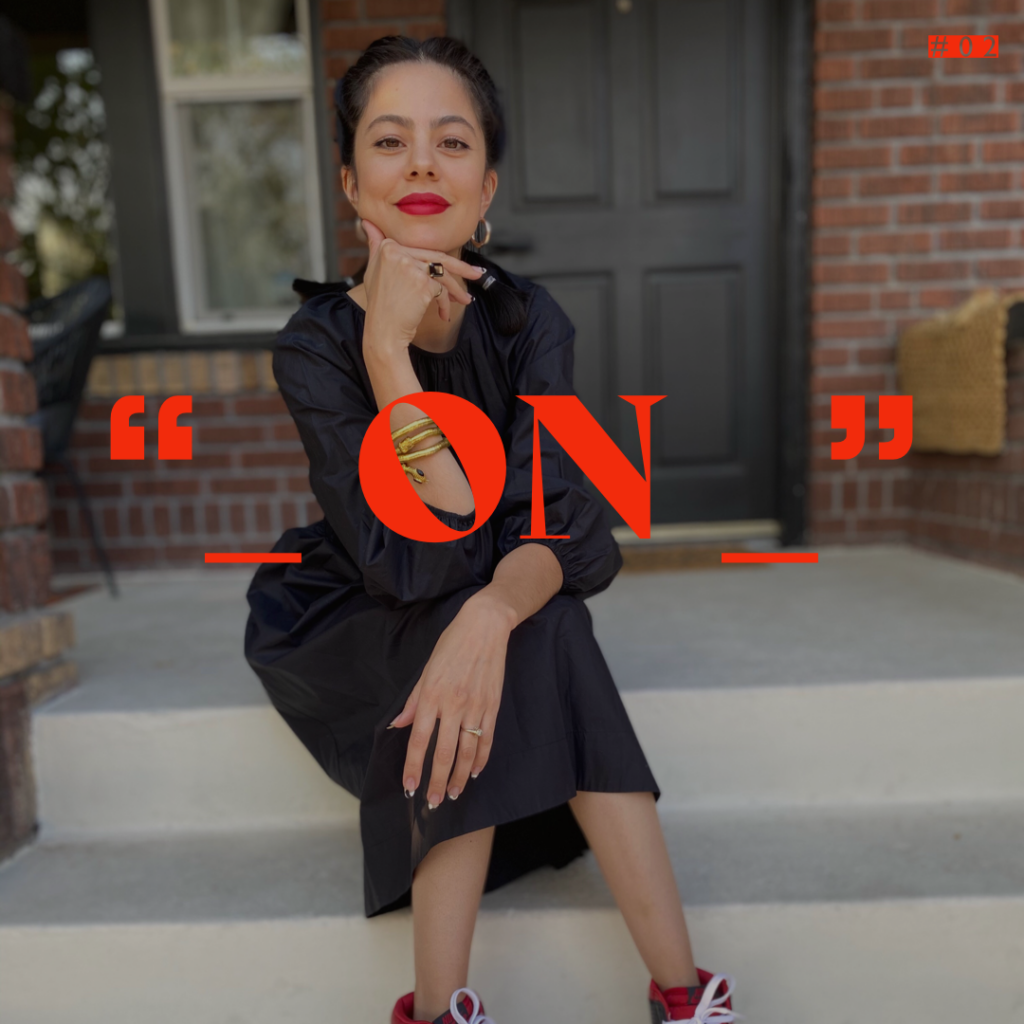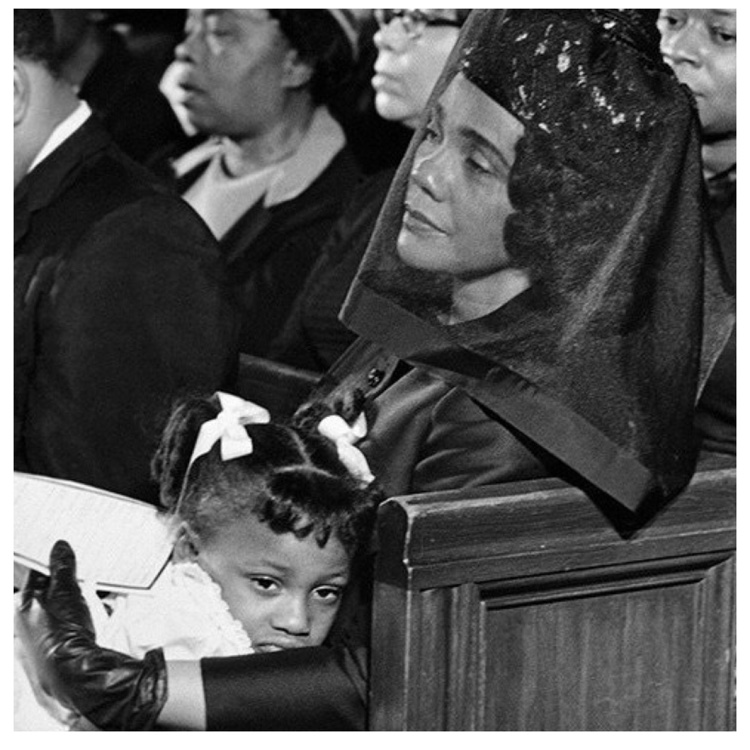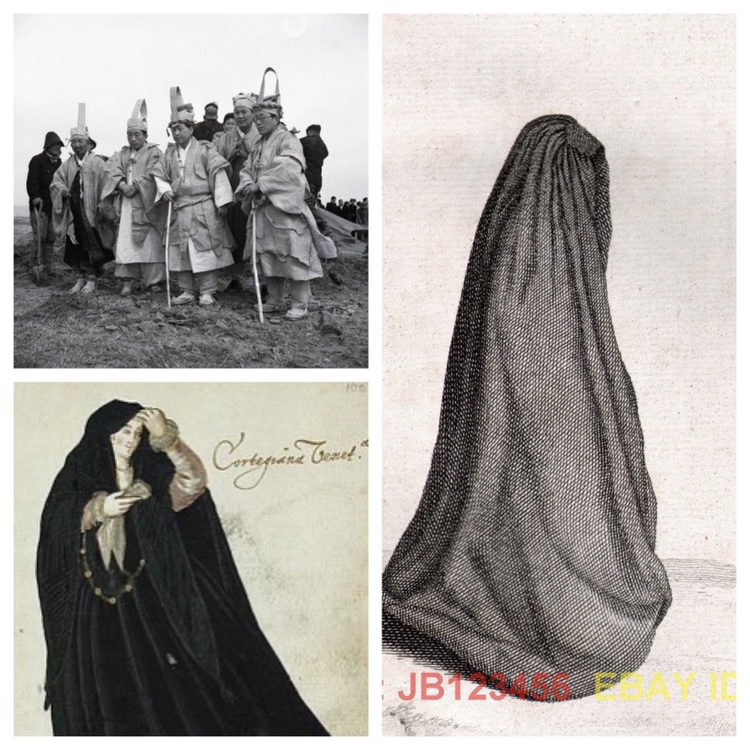In this new series we’ll be hearing from a new person each month, talking on a specific topic of their choosing – something they love, a hobby, an interest, a thread they’ve been feeling lately, or a new discovery.

Crystal Northon on Funeral Attire & Mourning Traditions
My fascination with people in black attire for funerals & mourning traditions started at my grandfather, Don Chano’s, funeral when I was 6 years old. He was from an impoverished tiny town in Mexico. Everyone loved him. The funeral was full of buses of people, mariachis, flowers, tequila, food & a lot of crying. Because people in & around that town were mostly poor, having nice clothes was rare. So I was in awe when so many of them came dressed perfectly in black suits, black dresses & black mantillas (veils)! I was in love.
It’s believed that the tradition of wearing black at funerals dates back to at least the roman empire when dark “toga pullas” would be worn to mourn the loss of a loved one. It was brought to the West from Europe in the 1800’s after being made famous by Queen Victoria who, mourning the passing of her husband, wore black for the rest of her life. Wearing black to a funeral shows reverence & unites people when words fail. AND who doesn’t look good in black? Picture Jackie O at JFK’s funeral. Pure elegance & respect. I love it. Especially in this day & age of athleisure wear, fast fashion & very little effort that is put into a persons closet/presentation. It’s the one time (for the most part) everyone gets on the same page to look polished & presentable. Not even weddings can do this. It’s my favorite part of any movie, the funeral scene!
Being a hopeless romantic, I find the most fascinating part of death is how cultures have traditionally mourned. Influenced by Europe & directed mainly at widows, the US in the 1800’s to early 1900’s had mourning stages. Stages were full, second & half mourning. Strict rules such as appropriate behavior, colors, fabrics & jewelry were part of every stage & funeral. For example, full mourning was exactly 1 year & 1 day, the woman would wear simple black, no jewelry or ornamentation & a black veil was mandatory. Widows weren’t likely to remarry but if they did, many would continue to wear black. One of my favorites is the Dani tribe of New Guinea, the death of a loved one is physical as well as emotional. At the funeral it is customary, for mainly women & children, to cover their faces in ashes to express sorrow but also cut off the top of their finger as a physical representation of emotional pain. In Tibet, they have “sky burials” where the loved is left for animals & birds of prey to consume. I can go on & on! Many cultures have their own distinctive funeral & mourning customs, amazingly the color black ties into a lot of them.
Funerals & mourning are a beautiful way of showing how uniquely every culture grapples with death & shares expressions of love & grief. It’s becoming more common for people to wear colors & not dress up for funerals. Why did our traditions die? (no pun intended!) It’s hard to process the loss of a loved one & in the West we tend to try to placate ourselves about what death is, instead of allowing ourselves to embrace it as a part of life. But there is no denying that there is something so romantic & so naturally ingrained in us about funeral & mourning traditions that losing them actually has been a disservice to our culture.
Needless to say, any of you attending my funeral, you know what to wear! Please make sure it fits you well and no open toed shoes.




